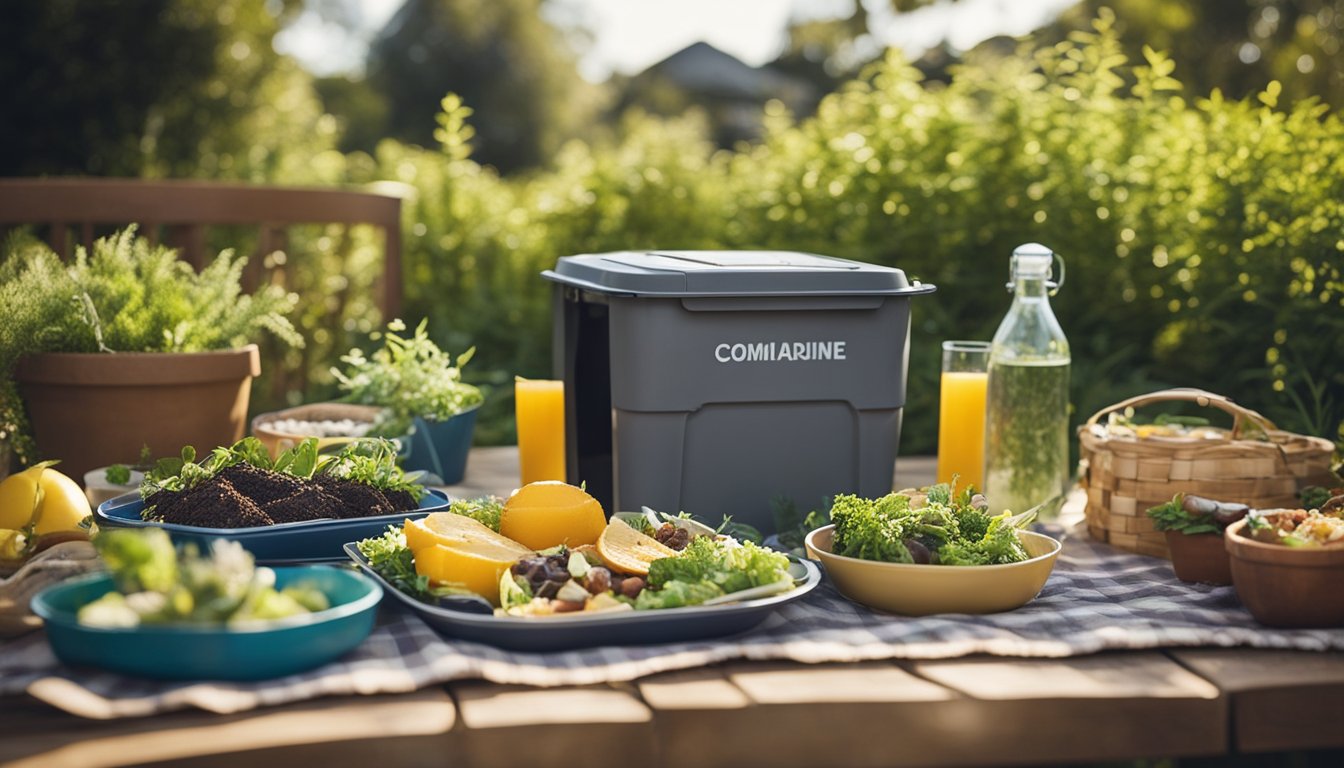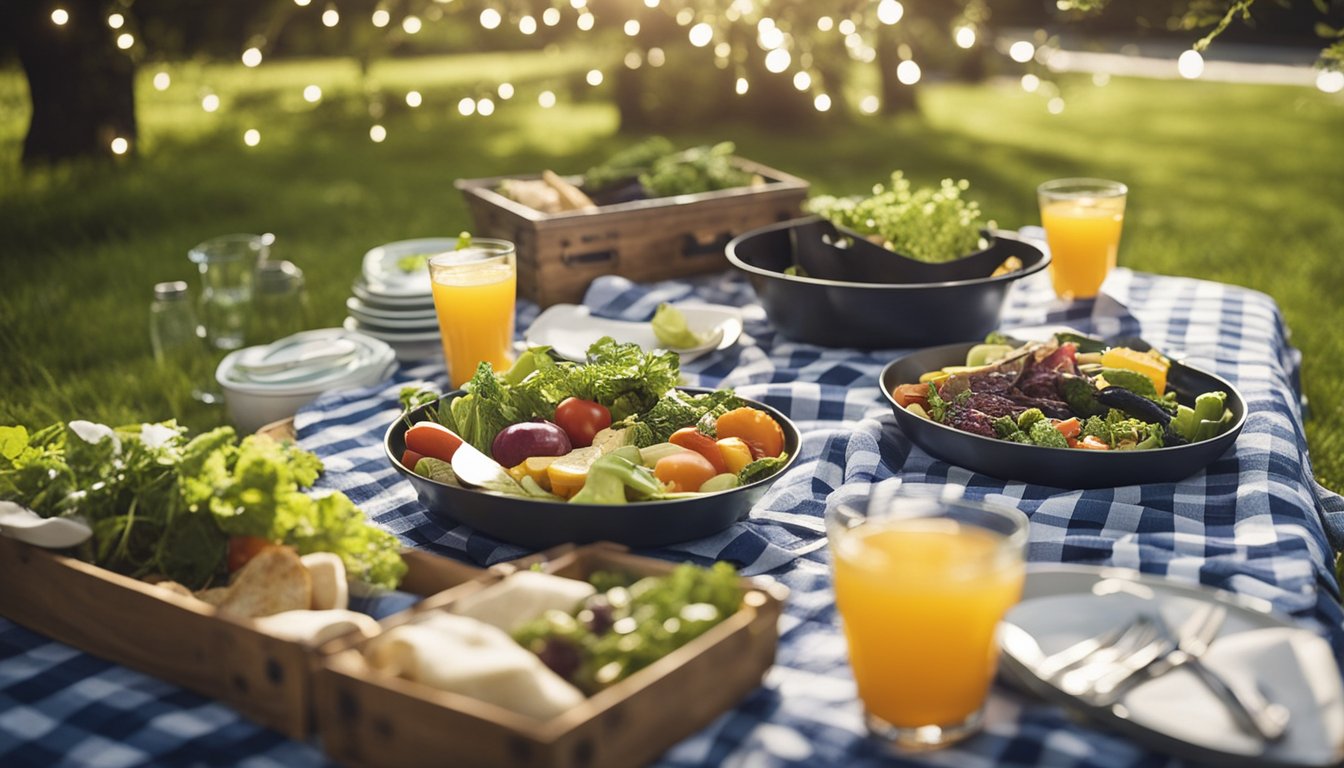Late updated: 18 Aug 2024 09:08
Written by: Sarah Hollister
Tips For Hosting Green Family Gatherings: Sustainable Practices For Eco-Friendly Events
Hosting a green family gathering is a wonderful way to celebrate while being mindful of our environmental impact. We all cherish moments spent with loved ones, and what better way to deepen these connections than by aligning our celebrations with sustainable practices? By adopting a few simple, eco-friendly strategies, we can reduce waste and protect our planet, all while creating cherished memories.

Planning your green gathering starts with making conscious choices about invitations, decorations, and catering. Opting for digital invitations can significantly cut down on paper waste. Similarly, choosing reusable or biodegradable tableware over single-use plastics not only helps the environment but also adds an elegant touch to the experience. Selecting locally-sourced and seasonal foods for the menu means fresher dishes and a smaller carbon footprint.
Another essential aspect is educating our guests. Sharing information about the sustainable practices we’ve implemented can inspire others in our community to consider similar eco-friendly approaches. Hopefully, by making smarter choices and leading by example, we can create a ripple effect that encourages others to host green gatherings. Together, we can foster a sense of responsibility and respect for our environment, ensuring the beauty and health of our planet for future generations.
Key Takeaways
- Use digital invitations and reusable tableware to reduce waste
- Choose locally-sourced, seasonal foods to lessen your carbon footprint
- Educate guests to inspire community-wide sustainable practices
Planning Your Green Gathering
Creating a sustainable and eco-friendly family gathering involves setting clear environmental goals, choosing appropriate venues, mindful guest listing, and optimising transportation.
Establishing a Sustainable Vision and Goals
We must begin by defining our sustainability objectives for the gathering. Identifying key areas such as waste reduction, energy conservation, and sourcing locally produced items is essential. Explicit goals help measure our event's environmental impact and guide our decisions.
By communicating these goals to our guests through online invitations or email, we set clear expectations and encourage cooperative efforts. Sharing this vision ensures everyone is on the same page and engaged in making the event as green as possible.
Choosing the Right Venue
Selecting the venue is a critical factor in reducing our environmental footprint. Outdoor venues can be an ideal choice, leveraging natural light and reducing energy consumption. If an indoor venue is necessary, opting for locations with eco-friendly credentials, such as LEED certification, is beneficial.
We should also consider venues close to the majority of our guests to minimise travel distances and environmental impact. Checking for facilities that support sustainable practices, such as recycling stations, composting options, and energy-efficient amenities, can further enhance our green goals.
Crafting an Eco-Friendly Guest List
An essential step is to create a guest list that supports our sustainable vision. Inviting those who are keen on eco-friendly practices helps align the gathering's goals with our audience's values. A smaller, more intimate gathering can often reduce the carbon footprint and make logistics easier to manage.
We should use digital invitations via email or a dedicated website to save paper and energy resources. Ensuring our guest list reflects a balance between family, friends, and sustainability advocates fosters a supportive environment for our green initiatives.
Green Transportation and Logistics
Transportation contributes significantly to the environmental impact of any event. Encouraging guests to use public transport, carpooling, or even cycling can substantially reduce the carbon footprint. Providing detailed information about public transport options and setting up carpooling groups can facilitate this effort.
Offering incentives, such as priority parking for carpoolers or discounts for those using sustainable transport methods, can motivate guests to choose greener options. Evaluating delivery methods for supplies and opting for local providers can also minimise transportation-related emissions, supporting our event's sustainability targets.
Implementing Sustainable Practices

When hosting green family gatherings, adopting sustainable practices is vital. This involves careful selection of catering options, reducing energy and material waste, picking eco-friendly decorations, and leveraging technology for outreach.
Eco-Conscious Catering and Beverages
For a sustainable gathering, we should choose plant-based food options which have a lower environmental impact compared to meat-based dishes. Opting for seasonal and locally sourced produce reduces transportation emissions. In terms of beverages, serving drinks in reusable or compostable cups helps minimize waste.
Offering a diverse menu that highlights plant-based recipes can also encourage guests to adopt more sustainable eating habits. Providing water stations with reusable glassware instead of bottled water can significantly cut down on plastic waste.
Reducing Energy and Material Waste
Minimising energy consumption can be as simple as hosting the gathering during the day to take advantage of natural light. For evening events, using solar-powered lights or energy-efficient LED bulbs is a practical choice. Setting up designated bins for recycling and composting ensures proper waste management.
Encouraging guests to carpool or use public transportation helps cut down on emissions. We can also provide clear signage to direct guests and make it easier for them to follow eco-friendly practices.
Decorations and Settings with Minimal Impact
Selecting decorations made from sustainable materials such as recycled paper, bamboo, or biodegradable products can significantly reduce environmental impact. Instead of single-use plastics, opting for reusable or easily compostable items like cloth napkins and wooden cutlery is a better choice.
Creating a natural and aesthetic setting can be achieved by using potted plants and locally grown flowers, which can be replanted or composted later. Reusable table linens and eco-friendly party favours, such as seed packets or handmade crafts, can enhance the experience without adding waste.
Innovative Use of Technology and Outreach
Utilising digital invitations instead of paper can save resources and make communication easier. We can use social media platforms to share event details and encourage sustainable practices among participants. Technology can also help in organising virtual workshops or conferences to promote sustainable living.
By setting up a small educational station with information on eco-friendly practices, we can engage and inform attendees. This can include interactive displays or videos showcasing the benefits of sustainability. Partnering with local non-profits can further enhance our outreach and impact.
Frequently Asked Questions

We understand the importance of planning eco-friendly family gatherings. From managing waste to reducing plastics, our aim is to share practical strategies that promote sustainability at your events.
What are the best strategies for hosting a large family gathering sustainably?
Choosing a location accessible by public transport or encouraging carpooling can reduce the carbon footprint. Opt for reusable tableware and decorations. Prioritise local and seasonal foods to minimise the environmental impact of catering.
Which eco-friendly practices can be easily implemented for a gathering of 20 or more guests?
Using digital invitations instead of paper ones is a simple change. Set up recycling stations clearly labelled for mixed waste, compost, and recyclables. Create a menu that includes plant-based options, which generally have a lower environmental impact.
How can hosts manage waste effectively during extensive multi-day family celebrations?
Provide separate bins for recyclables, compost, and landfill waste. Clearly label these bins and place them in easily accessible locations. Encourage guests to bring their own reusable containers for leftovers. Consider hiring a waste management service specialising in eco-friendly disposal.
In organising a party or get-together, what methods ensure a reduced environmental impact?
Plan activities that encourage minimal waste, such as storytelling or nature walks. Choose a venue that supports sustainability practices. Use energy-efficient lighting and minimal decorations. Avoid using items that require single-use batteries.
What are the top considerations for reducing plastic and disposables at family parties?
Replace plastic cups, plates, and cutlery with reusable or compostable alternatives. Avoid single-use plastic decorations. Offer water in large dispensers or pitchers instead of bottled water. Encourage guests to bring their own reusable items, such as water bottles or coffee cups.
How can one integrate engaging, eco-conscious activities into a fun family event?
Set up stations for crafting with recycled materials. Organise a nature scavenger hunt or a garden planting activity. Host a workshop on sustainable living tips. Incorporate educational games that focus on recycling and conserving resources to make learning fun.
